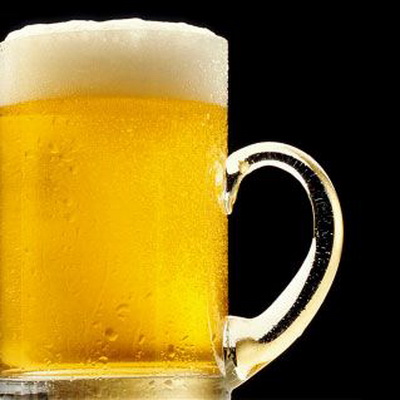|
Advertisement
Herbs
often used in Thai cooking
|
Many herbs and spices used in Thai cuisine have beneficial medicinal properties.
Here are some examples. |
 |
Chili: "Phrik" in Thai
Chili is an erect, branched, shrub-like herb with fruits used as garnishing and flavouring in Thai dishes. There are many different species. All contain capsaicin, a biologically active ingredient beneficial to the respiratory system, blood pressure and heart. Other therapeutic uses include being a , carminative and anti flatulence agent, and digestant. |
 |
Cumin: "Yi-ra" in Thai
Cumin is a small shrubbery herb, the fruit of which contains a 2-4% volatile oil with a pungent odour, and which is used as a
flavouring and condiment. Cumin's therapeutic properties manifest as a stomachic, bitter tonic, carminative, stimulant and astringent. |
 |
Garlic: "Kra-thiam" in Thai
Garlic is an annual herbaceous plant with underground bulbs comprising several cloves. Dried mature bulbs are used as a flavouring and condiment in Thai cuisine. The bulbs contain a 0.1-0.36% garlic oil and organic sulfur compounds. Therapeutic uses are as an antimicrobial, diaphoretic, diuretic, expectorant, anti flatulence and cholesterol lowering agents. |
 |
Ginger: "Khing" in Thai
Ginger is an erect plant with thickened, fleshy and aromatic rhizomes. Used in different forms as a food, flavouring and spice. Ginger's rhizomes contain a 1-2% volatile oil. Ginger's therapeutic uses are as a carminative, antinauseant and antiflatulence agent. |
 |
Galanga: "Kha" in Thai
Greater Galanga is an erect annual plant with aromatic, ginger-like rhizomes, and commonly used in Thai cooking as a flavouring. The approximately 0.04 volatile oil content has therapeutic uses as carminative, stomachic, antirheumatic and antimicrobial agents. |
 |
Hoary Basil: "Maeng-lak" in Thai
Hoary Basil is an annual herbaceous plant with slightly hairy and pale green leaves, eaten either raw or used as a flavouring, and containing approximately 0.7% volatile oil. Therapeutic benefits include the alleviation of cough symptoms, and as diaphoretic and carminative agents. |
 |
Kafffir: "Ma-krut" in Thai
The leaves, peel and juice of the Kaffir Lime are used as a flavouring in Thai cuisine. The leaves and peel contain a volatile oil. The major therapeutic benefit of the juice is as an appetizer. |
|
 |
(No Common English Name): Krachai in Thai
This erect annual plant with aromatic rhizomes and yellow-brown roots, is used as a flavouring. The rhizomes contain approximately 0.8% volatile oil. The plant has stomach ache relieving and antimicrobial properties, and therapeutic benefits as an antitussive and antiflatulence agent. |
 |
Lemon Grass: "Ta-khrai" in Thai
This erect annual plant resembles a coarse gray-green grass. Fresh leaves and grass are used as flavouring. Lemon grass contains a 0.2-0.4 volatile oil. Therapeutic properties are as a diuretic, emmanagogue, antiflatulence, anti flu and antimicrobial agent. |
 |
Lime: "Ma-nao" in Thai
Lime is used principally as a garnish for fish and meat dishes. The fruit contains Hesperidin and Naringin , scientifically proven antiinflammatory flavonoids. Lime juice is used as an appetizer, and has antitussive, anti flu, stomachic and antiscorbutic properties. |
 |
Marsh Mint: "Sa-ra-nae" in Thai
The fresh leaves of this herbaceous plant are used as a flavouring and eaten raw in Thai cuisine. Volatile oil contents give the plant several therapeutic uses, including
carminative, mild antiseptic, local
anesthetic, diaphoretic and digestant
properties. |
 |
Pepper: "Phrik-Thai" in Thai
Pepper is a branching, perennial climbing plant from whose fruiting spikes both white and black pepper are obtained. Used as a spice and condiment, pepper contains a 2-4% volatile oil. Therapeutic uses are as carminative, antipyretic, diaphoretic and diuretic agents. |
 |
Sacred Basil: "Ka-phrao" in Thai
Sacred Basil is an annual herbaceous plant that resembles Sweet Basil but has narrower and often times reddish-purple leaves. The fresh leaves, which are used as a flavouring, contain approximately 0.5% volatile oil, which exhibits
antimicrobial activity, specifically as a
carminative, diaphoretic, expectorant and
stomachic. |
|
 |
Shallot: "Hom,Hom-lek,Hom-daeng"in Thai
Shallots, or small red onions, are annual
herbaceous plants. Underground bulbs
comprise garlic-like cloves. Shallot bulbs
contain a volatile oil, and are used as
flavouring or seasoning agents. Therapeutic properties include the alleviation of stomach discomfort, and as an antihelmintic, antidiarrhoeal, expectorant, antitussive, diuretic and anti flu agents. |
 |
Sweet Basil: "Ho-ra-pha" in Thai
Sweet Basil is an annual herbaceous plant, the fresh leaves of which are either eaten raw or used as a flavouring in Thai cooking. Volatile oil content varies according to different varieties. Therapeutic properties are as carminative, diaphoretic, expectorant, digestant and stomachic agents. |
 |
Turmeric: "Kha-min" in Thai
Turmeric is a member of the ginger family, and provides yellow colouring for Thai food. The rhizomes contain a 3-4% volatile oil with unique aromatic characteristics. Turmeric's therapeutic properties manifest as a carminative, antiflatulence and stomachic. |
|
|
Home
Thank you to TAT for the use of this material
© 1997 Tourism Authority of Thailand
|
วันที่ 17 พ.ค. 2552
🖼สำหรับคุณครูไว้ใส่เกียรติบัตรสวยและถูก🖼 กรอบป้ายอะคริลิคตั้งโต๊ะ A4 แนวนอน 30x21.5 cm อะคริลิคใส 1 หน้า ทรง L (A4L1P) ในราคา ฿129 คลิกเลย👇👇https://s.shopee.co.th/1qLFIZVf4t?share_channel_code=6
Advertisement

เปิดอ่าน 7,165 ครั้ง 
เปิดอ่าน 7,161 ครั้ง 
เปิดอ่าน 7,164 ครั้ง 
เปิดอ่าน 7,163 ครั้ง 
เปิดอ่าน 7,169 ครั้ง 
เปิดอ่าน 7,164 ครั้ง 
เปิดอ่าน 7,152 ครั้ง 
เปิดอ่าน 7,168 ครั้ง 
เปิดอ่าน 7,161 ครั้ง 
เปิดอ่าน 7,159 ครั้ง 
เปิดอ่าน 7,176 ครั้ง 
เปิดอ่าน 7,157 ครั้ง 
เปิดอ่าน 7,156 ครั้ง 
เปิดอ่าน 7,171 ครั้ง 
เปิดอ่าน 7,163 ครั้ง 
เปิดอ่าน 7,167 ครั้ง |

เปิดอ่าน 7,166 ☕ คลิกอ่านเลย |

เปิดอ่าน 7,159 ☕ คลิกอ่านเลย | 
เปิดอ่าน 7,155 ☕ คลิกอ่านเลย | 
เปิดอ่าน 7,160 ☕ คลิกอ่านเลย | 
เปิดอ่าน 7,190 ☕ คลิกอ่านเลย | 
เปิดอ่าน 7,156 ☕ คลิกอ่านเลย | 
เปิดอ่าน 7,159 ☕ คลิกอ่านเลย |
|
≡ เรื่องน่าอ่าน/สาระน่ารู้ ≡ 
เปิดอ่าน 14,217 ครั้ง | 
เปิดอ่าน 12,507 ครั้ง | 
เปิดอ่าน 8,805 ครั้ง | 
เปิดอ่าน 23,763 ครั้ง | 
เปิดอ่าน 30,650 ครั้ง |
|
|








